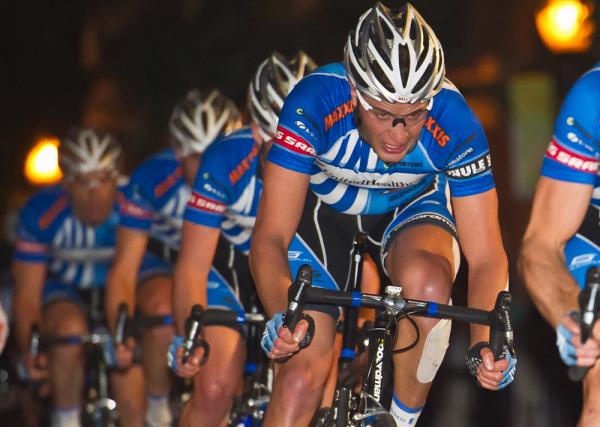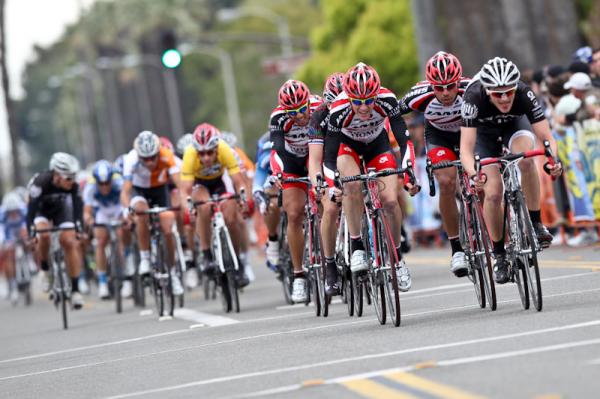Sprinters revel over potential stage two sprint in Utah
Fast men expected to go head-to-head in Provo


The UCI 2.1-ranked Larry H. Miller Tour of Utah is one of the toughest high-altitude and mountainous stage races in the nation and not typically suited to a sprinter. The handful of fast men in attendance, however, are chomping at the bit for the chance to win the only predominantly flat stage, held on Tuesday, August 11 from Lehi to Provo.
"I think I can have a good sprint because there aren't too many fast guys at this race," said Jamis-Sutter Home's sprinter Alejandro Borrajo. "I will have to see how I do in stage one, the sprinters have to survive that. I felt good last week and I hope that I can survive stage one and then have a good sprint in stage two."
The Tour of Utah kicked off with a two-kilometre uphill prologue at the Utah Olympic Park in Park City. The race continued into stage one, a 182.9km circuit race that passes three times over the steep and decisive North Ogden Pass.
"Stage two is the only reason I'm here," said UnitedHealthcare's sprinter Jake Keough. "I think the overall race will be good and we brought a well rounded team because every stage has something different. We have climbers, time trialists, sprinters and opportunity guys. We have two sprinters here with Frosi (Robert Forster) and myself. Hopefully we can get through stage one without using too much energy and have a good stage two."
Stage two's 159.6km road race is the only flat stage of the six-day event and likely the only stage to look forward to for sprinters such as Borrajo, Forster and Keough along with Alex Candelario (Kelly Benefit Strategies-OptumHealth), Hayden Roulston (HTC-Highroad), Elia Viviani (Liquigas-Cannondale). Other fast men in the field include Francois Parisien (SpiderTech p/b C10), Tommy Nankervis (RealCyclist.com), Patrick Bevin (Bissell) and Roman Van Uden and Mike Northey (PureBlack Racing).
"I think there are a handful of sprinters here but the field is lacking in full lead-out teams," Candelario said. "But I think the sprint will be competitive. Stage two is definitely a big objective for me. I think that if whatever team is leading the overall classification heading into that stage is having a hard time controlling the race, the teams with sprinters will make sure that it is a field sprint."
UnitedHealthcare's lead-out train has not gone unnoticed this year as they have displayed it on multiple occasions this season to bring its array of sprinters to victory. According to Keough, if the field enters the stage two finale intact, the peloton and event spectators can expect to see his lead-out train in action. "Depending on how the race plays out, if it comes down to it, you can expect the blue train to be there," he said.
Get The Leadout Newsletter
The latest race content, interviews, features, reviews and expert buying guides, direct to your inbox!
Borrajo is one sprinter that is familiar with UnitedHealthcare's lead-out and he will be looking to key off of it in hopes that it might be his own ticket to a stage win.
"I think UnitedHealthcare has a good team to do a lead-out and they have two sprinters so I will look to them for the lead-out," Borrajo said. "There are other sprinters here too, but I feel more comfortable keying off of UnitedHealthcare because I know them better."

Kirsten Frattini is the Deputy Editor of Cyclingnews, overseeing the global racing content plan.
Kirsten has a background in Kinesiology and Health Science. She has been involved in cycling from the community and grassroots level to professional cycling's biggest races, reporting on the WorldTour, Spring Classics, Tours de France, World Championships and Olympic Games.
She began her sports journalism career with Cyclingnews as a North American Correspondent in 2006. In 2018, Kirsten became Women's Editor – overseeing the content strategy, race coverage and growth of women's professional cycling – before becoming Deputy Editor in 2023.